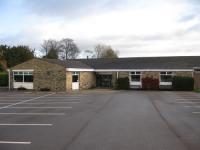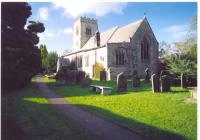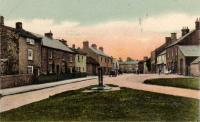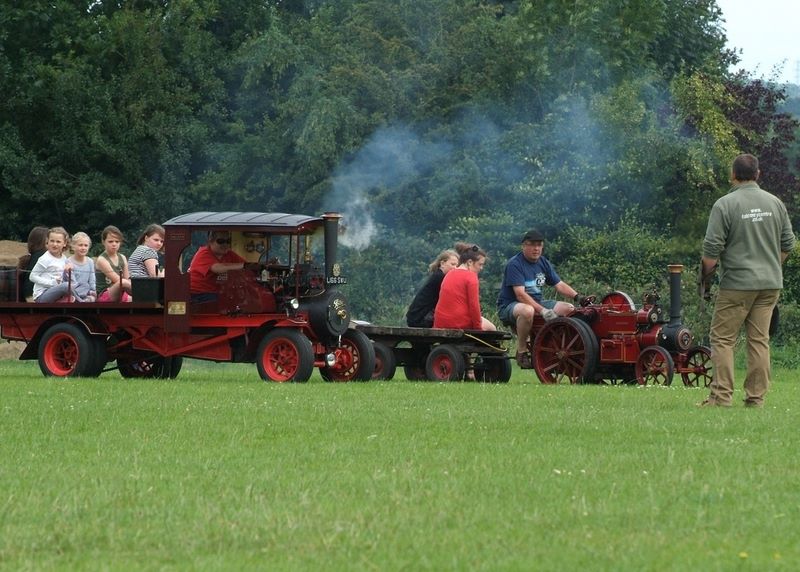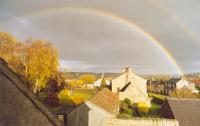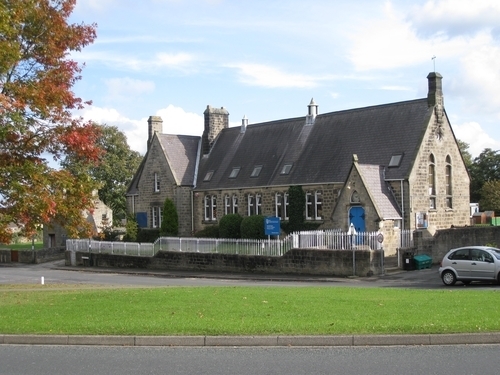Recent articles
© DT Online 2010 - 2025
| The Dale Hall[The modern housing development of Dawson Court which now stands on the south side of Hollins Lane occupies the site of the old Dale Hall the history of which is described in the following article by Carol Parker and based on a conversation with Leo Dawson…….] The Dale Hall, which until recently stood on Hollins Lane, played a large part in Hampsthwaite’s life and for many years was the only “gathering place” for the villagers. It was erected and run by the Dawson family.
Charles Frederick Dawson brought his family to the village in 1902 to live at the newly-built “Springhaven”. He was a very keen gardener and kept adding to his land until he owned the whole area fronting on to Hollins Lane from the butcher’s shop and abattoir (now numbers 24 and 26) to just below the Police Station. Here he laid a tennis court and built a swimming pool, as well as growing specialist plants and shrubs. He extended the house in the mid-nineteen twenties. After the end of World War I – in 1920 to be exact – C.F. Dawson’s sons, Roland and Oliver, started to erect individual houses on part of the land, often for members of the family. They had no building training, but learned their skills by watching craftsmen at work and by copying them. In their spare time the brothers formed a Dance Band, Roland playing the piano and Oliver the drums. They performed at village halls up and down Nidderdale, but there was no venue in Hampsthwaite itself.  It was in 1927 that Roland and Oliver decided to remedy the situation by building for the village what was to become the future Dale Hall. Their father provided some money; they worked hard themselves and employed local labour; the whole thing was done on a shoestring. The stone was quarried at Reynard (pronounced “Rennie” locally) Crag and was collected every morning by Roland. It was crushed and screened on site, every piece being used – either mixed with cement and pressed into building blocks or made into concrete. The mould in which the blocks were made is still in existence. The building was sited over the old swimming pool, which formed a cellar, and the windows came from an old school in Masham. C.F. Dawson, who was interested in the possible promotion of amateur dramatics in the Hall, insisted upon a full-sized stage.
The Hall was finally opened for dancing – accompanied by the Dale Hall Dance Band – on September 14th, 1929, while a Grand Concert, featuring Miss Geraldine Peck, daughter of the vicar and sister of Mrs. Roland Dawson, followed on December 5th.  Interior of Dale Hall in the 1990's
The ceiling of the Hall and the upper walls were painted by Mrs. Oliver Dawson with murals depicting Shakespearean characters. A large entrance hall at the top of the wide exterior steps greeted visitors. The inside staircase, with cloakrooms on either side, swept up to a café on the first floor. In the 1930s this eating place – run by the Dawson family – was a popular venue for Afternoon Tea, particularly with those taking a run out in their cars. It was also used by Leeds taxi drivers on their annual trip for needy children. The main hall itself, meanwhile, was used for Amateur Dramatics, Badminton, Film Shows, other village functions and even boxing bouts, arranged by Harold Styan, (founder of a Youth Club for Boys near the Little Wonder in Harrogate).
There were also regular Friday and Saturday night dances with the Dale Hall Dance Band.
In 1935 the Dawson family opened their servicing garage – with two manual pumps – behind the Hall; not until 1959 were the three new petrol pumps installed on the roadside in front of it. 1937 saw the arrival of the electronic (Hammond) organ with its flashing lights - similar to the one in the Blackpool Tower. It was actually played by the popular BBC organist, Reginald Foort, at a special concert on February 4th, 1950. Meanwhile, many residents in the village enjoyed Roland’s playing as the music drifted across the fields on summer evenings.  When World War II began in 1939, the Hall was closed to the general public and was used as an army billet. Later, the Air Ministry took it over as a depot for cork, steel and processed aluminium, which were still there at the end of hostilities in 1945!
By 1946 Roland and his wife had begun to restore the Hall and eventually a Fashion Show was held to celebrate the end of clothes rationing. For the next fourteen years it reverted to its pre-war use, but great changes lay ahead. A wall was built across the building; the internal staircase was removed and the front of the Dale Hall became a Showroom. The remaining part was used for badminton, until Bryan Thompson took it over in 1989 as an Auction Room. In 1961, when the Gaumont Cinema at Oldham was demolished, the Cinema Organ Society wanted to preserve its Wurlitzer organ. Roland agreed to install it in the Hall in place of the Hammond. Even with the Society’s assistance, it took him four years to restore it to playing standard.
The Wurlitzer theatre organ is now installed in Victoria Hall, Saltaire Roland gave the Dale Hall to three of his sons – Leo, Gerald and John – in 1973. Leo left the business after a time and moved to Burnt Yates, while Gerald and John continued to run the garage and filling station, with occasional help on the pumps from their father – until he was eighty, that was! At this point “Springhaven” was converted into four flats, two of which were sold to Michael Lister.  The Dale Hall in the 1980's
In 1993, Gerald suffered a severe heart attack and was advised to retire before his sixtieth birthday. By this time technology in the motor trade had increased: the intervals between services had lengthened and the supermarkets nearly all had filling stations. Sadly, it was no longer viable to offer the personal service for which Gerald and John were so well known. Thus it came about that, following the trend in so many privately-owned petrol stations all over the country, they decided to close down and to sell their land for building.
In December 2000 the filling station, garage and Dale Hall were demolished to make way for housing. The “Springhaven” flats were left standing on the north-east corner - to be joined by DAWSON COURT, a development of twelve houses, in one of which, happily, Richard DAWSON, son of Gerald and Carol, has taken up residence with his family. Thus the DAWSON name continues on the site. |




















